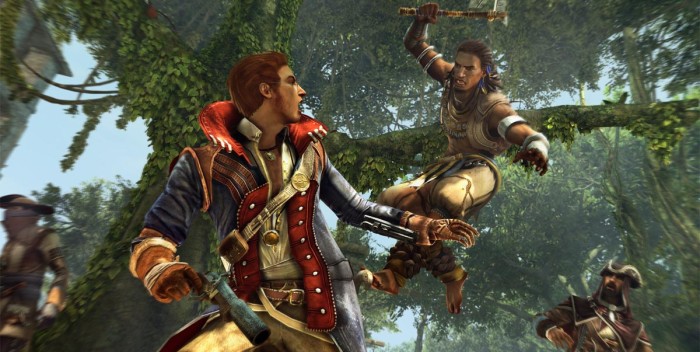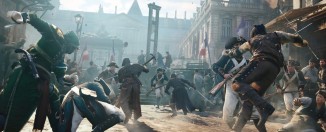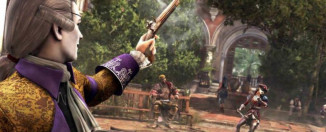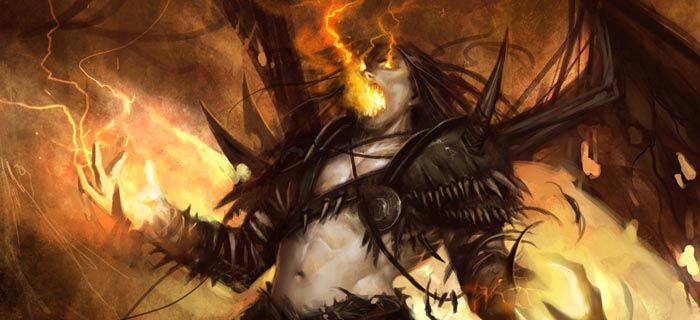AC4 Black Flag multiplayer strategy #1: Identifying Targets with the HUD (basic)
Welcome to Part 1 in WiNGSPANTT’s Assassin’s Creed 4: Black Flag multiplayer strategy guide!
Identifying Targets, Part I: Game basics and the HUD
Sometimes, marking your target is easy. You’ll be rounding a corner when an idiot with a high profile indicator crashes directly into you – and lucky you, she’s got the same face as the virtual wanted poster in your HUD! Reckless morons like this can make your life easy… but in most situations, your contracts won’t be so accommodating.
If they’re located somewhere in a busy plaza or blended into a crowd, you’ll have to actively figure out approximately where your victim is, who they are, how you’re going to exterminate them, what abilities you’ll need to use, and when you want to strike.
Don’t worry about the why of murdering. Leave that one to the priests and philosophers.
There are a variety of ways to spot your subject (HUD, abilities, behavior, slick tricks), but you’ve got to carefully balance the speed and stealth of your approach. Every second you spend scanning and doubting your target’s identity you’re increasing the odds your victim will identify and stun you. A poor approach also gives your own stalkers more time and clues to pick you out of the crowd. Practice constantly so you can strike with the speed and certainty.
Heads Up Display (HUD)
The most immediately useful tool to ID your target is, of course, the in-game overlay. These are simply location and identification tools provided by Ubisoft that you need to understand and master to attain a basic level of competence and avoid simple mistakes.
Wanted
Since Wanted is the original FFA game mode from Assassin’s Creed: Brotherhood, we’ll begin here. And, if you’re new to Black Flag’s multiplayer, you should consider starting with Wanted, too. Almost every other gameplay can be considered a variant of Wanted, so learning how to play it will give you a solid foundation for all other match types.
In Wanted, your target HUD is made up of two primary tools, your target portrait and your radar.
The target portrait displays a picture of your assigned contracts’ persona. Essentially, it’s the face of the unfortunate sucker you’ll soon be gutting/shooting/pulling off a building. While you can refer to it by visual likeness when you start out, it’s important that you quickly familiarize yourself with all the game’s personas and their various costumes. Many personas appear similar at a distance, and with in-game customization it’s possible your target doesn’t look much like the portrait at all, even up close. In the heat of a tense match, you won’t have time to study your target’s eye shadow before putting a dagger between her steely, yet beautiful, eyes.
In addition to displaying the person you’re being paid (in points) to kill, the portrait conveys other information. If the portrait persona zooms in, it means you’re very close (about 10 meters) to your contract. You’ll also hear a heartbeat indicating the same thing (more on this later).
When the target portrait is illuminated, you have line of sight (LOS) on the target– there is an imaginary, uninterrupted line between your character and your unfortunate victim. LOS is ultra-important for all Assassin’s Creed multiplayer game modes, as it can instantly confirm or eliminate any character as your real prey. If your LOS indicator flashes on when one persona waltzes into the open, then blinks off when he slips behind a tree, you can bet your Animus that’s the guy you’re looking for. We’ll discuss advanced LOS tactics later.
In addition to the target portrait, Wanted provides you with radar that (surprise, surprise) points you in the general direction of your intended mark. The farther you are from your target, the more accurate the radar is; as you get closer, the radar will broaden, making it harder to use to pick out an exact persona from a crowd (though still easy if your perp walks out solo or “hides” in a relatively open hay bale. When you’re extremely close to your victim, the radar will fill completely. In most cases, this means it’s useless, though keep in mind a full radar can prevent you from chasing a Decoy that runs off into the distance. If your radar says the player is close, don’t give in to the impulse to chase a look-alike!
Much like the target portrait, radar indicates LOS whenever it’s illuminated. Your radar also provides you with an elevation indicator that tells you when your target is significantly higher or lower than your position. This tool instantly rats out gamers who like to spend time on the roof, plus it can give you a better idea of safe, profitable approaches. If you know the person you’re after is currently above you, they’ve got limited options for where to go next. Set up a lucrative ledge grab or cut your quarry off on the ground so you’re not forced to give your position away.
Finally, you’ll hear a heartbeat as you close in on your target. This faint sound will intensify as the distance closes, so listen up. Still, the heartbeat doesn’t tell you that much more than your radar and target portrait already convey, but it’s nice to have a non-visual indicator you can count on. Much more valuable is the whispers you’ll hear when your own killer is stalking you, but we’ll talk about those in the defensive strategy section.
Deathmatch
In Deathmatch, you won’t have radar – just a target portrait to work from. It works similarly to the one in Wanted, though your line of sight indication is now indicated by the outer bezel section of the target portrait. When the brim is illuminated, you’ve got eyes on the prize. Still, without radar you won’t have any indicators for the actual direction or altitude of your prey.
This may sound like a terrible handicap, but keep in mind Deathmatch maps are very small (so radar wouldn’t be that helpful anyway) and, by default, there are no persona duplicates in this game mode. Unless your target is using a perk/ability to alter his own appearance or the appearance of nearby NPCs, identifying targets with the HUD and certain tells (see notes at the end of this section) is sufficient.
Assassinate
Originally a DLC addition to Assassin’s Creed: Brotherhood, Assassinate is drastically different in terms of the target/pursuer dynamic. We’ll discuss the details later, but for now, let’s finish up our HUD review.
In Assassinate, you’ll be working with a highly modified halo radar. Since you’re not assigned contracts by the game engine, your radar is designed to show you where all player characters are… with some restrictions. Whenever a player is nearby (at a relatively large range, perhaps 30 meters), he will appear as a small arc on the outer rim of your halo radar. As the gap closes, that arc will grow larger, ultimately filling the halo completely at close range (not unlike normal radar).
At any given time, there could be up to seven arcs on your halo radar, one for each opposing player. By watching the radar closely, you can therefore guess when you’re about to be cornered by multiple killers, or when two or more players are converging on one another… the perfect opportunity for an enterprising virtual assassin! Each halo arc will illuminate when LOS is achieved as well, so keep your eyes tuned to little flashes of light.
When you acquire (lock onto) a character, your HUD will (after a short delay) switch to the Wanted HUD. You will gain normal radar, a target portrait of your locked persona, and an approach meter, but you will lose your halo radar, effectively giving you tunnel vision on your victim. I repeat: you’ll be totally blind to the six other assassins roaming the map. For this reason, it’s best to limit how long you stay locked on to any one character. Only acquire someone when you’re sure they’re a real player and you can reach/destroy them in a relatively short amount of time.
Looking for more tips? Head back to the main Assassin’s Creed multiplayer strategy guide index.








[…] Part 1: Identifying Targets with the HUD (basic) […]
This is really useful! I’m on level 37 and most of these still somewhat came as a surprise to me. Additionally, making this accessible for free was very kind.